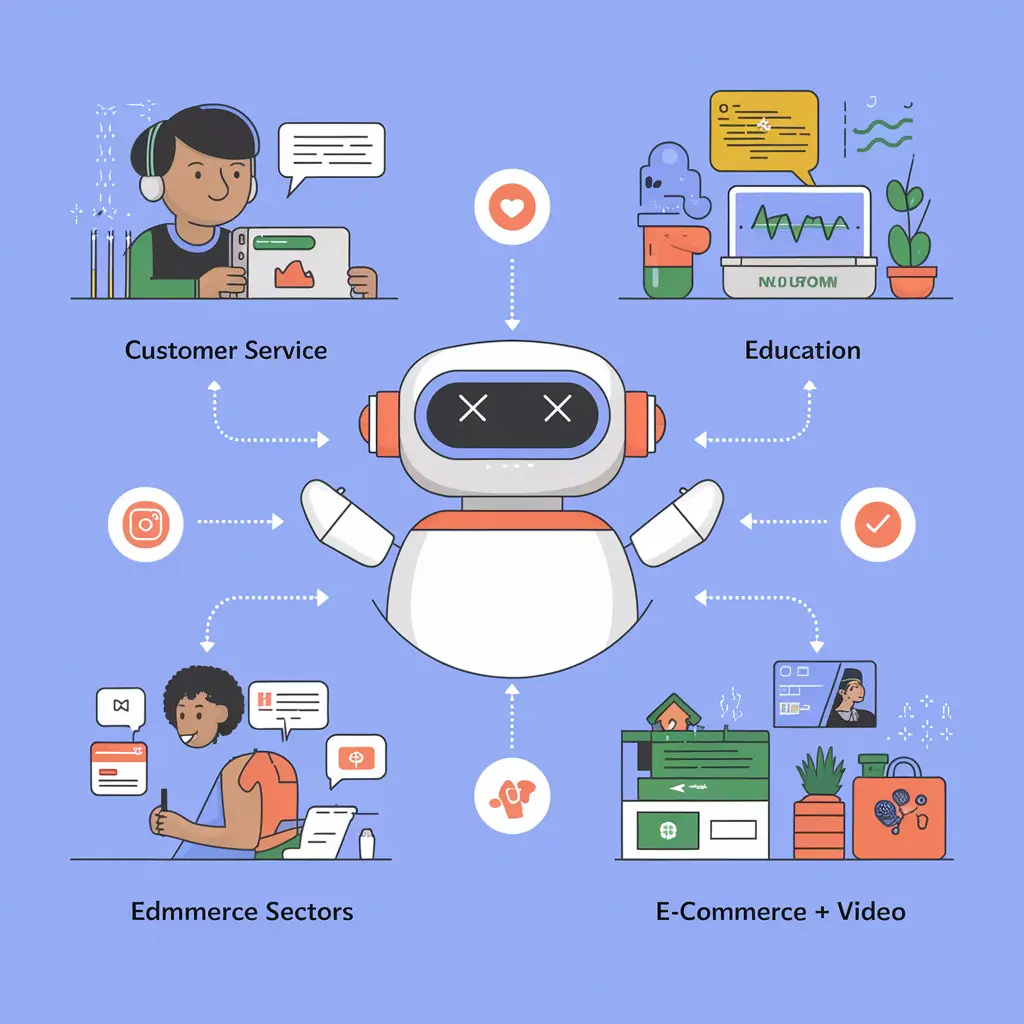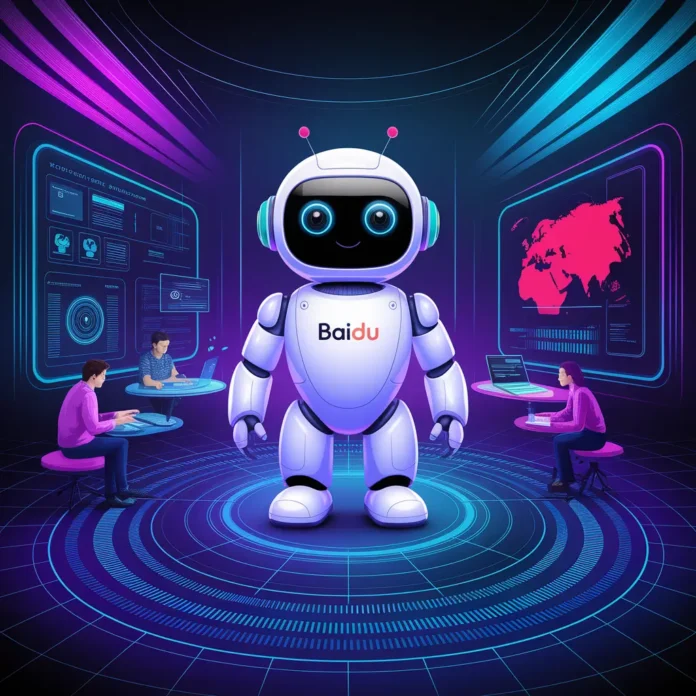Ernie Bot is making global headlines as Baidu, one of China’s leading tech giants, takes a bold step by open-sourcing this powerful AI chatbot. The move signals a significant shift in Baidu’s AI strategy—focused on accelerating innovation, adoption, and collaborative development on a global scale. This article explores Ernie Bot’s architecture, uses, advantages, limitations, and how it compares with its global counterparts.
What is Ernie Bot and Why Is It Important?
Ernie Bot, short for Enhanced Representation through Knowledge Integration, was launched in March 2023 by Baidu. It’s an AI chatbot built on top of Baidu’s foundational language model, ERNIE, developed since 2019. Ernie Bot can understand and generate human-like responses, complete tasks like essays, translations, and even conduct multi-format interactions such as audio, video, and images. Its open-source availability is poised to democratize access to top-tier AI for global developers.
Core Technology Behind Ernie Bot
Ernie Bot’s performance relies on advanced NLP (Natural Language Processing) techniques and large-scale machine learning. The AI chatbot is trained using massive datasets combining textual content and structured knowledge graphs. The model learns through:
- Pre-training: Learning linguistic structures from large text corpora.
- Supervised Fine-tuning: Calibrating responses to specific task requirements.
- Reinforcement Learning with Human Feedback (RLHF): Enhancing model accuracy through real-time human guidance.
These advanced methods allow Ernie Bot to produce highly contextual, coherent, and responsive outputs across various domains.
Ernie Bot Focus Keyword Application and Open-Source Benefits
The open-sourcing of Ernie Bot gives developers worldwide the opportunity to contribute, optimize, and customize the chatbot to fit unique applications. This step not only enriches the global AI ecosystem but also allows greater flexibility, transparency, and innovation in chatbot development. Companies can reduce development costs while leveraging a tested LLM framework.
Understanding Knowledge Integration in Ernie Bot
Ernie Bot differentiates itself with its core concept: knowledge integration. By incorporating structured knowledge graphs into its training pipeline, the chatbot can retrieve more reliable and logically consistent information. This integration allows it to answer complex queries with contextual understanding that surpasses regular LLMs trained only on raw text.
Multimodal Functionality: Beyond Just Text
One of the most significant advantages of Ernie Bot is its capability to handle diverse content forms:
- Text Understanding & Generation
- Image Interpretation
- Audio Interaction
- Video Summarization & Tagging
This multimodal processing makes Ernie Bot suitable for modern applications like virtual customer agents, educational tutors, social media assistants, and even smart city management tools.
Pros and Cons of Ernie Bot
Pros
- Open-Source Accessibility: Facilitates customization and rapid development cycles.
- Multimodal Integration: Handles diverse input/output formats effectively.
- Mobile Scalability: Can be optimized for use on mobile and IoT devices.
Cons
- Regulatory Limitations: Subject to Chinese government censorship and content moderation policies.
- Global Competition: Faces strong rivalry from established platforms like ChatGPT and emerging players such as DeepSeek.
Set Up Ernie Bot: A Technical Guide
Developers can easily access and set up Ernie Bot by following three main steps:
1. Clone the GitHub Repository
Use the Git command:
git clone https://github.com/baidu/ernie-bot.git
2. Install Necessary Dependencies
Navigate to the project directory:
cd ernie-bot
pip install -r requirements.txt
3. Run the Application
Start the chatbot:
python app.py
Ensure GPU configuration and Python versions are compatible for smooth operation and inference.
Use Cases of Ernie Bot Across Industries
Ernie Bot can transform how businesses operate, support customers, and manage content. Its adaptable nature equips it for multiple use case scenarios:
- Customer Service: Automating FAQs and integrating with CRM systems.
- Education: Creating intelligent tutoring systems that customize lesson plans, explain topics, and evaluate progress.
- Healthcare: Offering preliminary symptom analysis and appointment scheduling.
- Finance: Assisting users with budgeting, investment planning, and transaction FAQs.
Ernie Bot’s Role in Baidu Ecosystem
Baidu has already integrated Ernie Bot within its search products. Users now receive responsive, conversation-based results similar to ChatGPT’s interface. This not only improves experience but also reduces misinformation by using structured knowledge. Such integration signifies Baidu’s ambition to create a deeply embedded digital assistant throughout its ecosystem.
Comparison: Ernie Bot vs ChatGPT vs DeepSeek
| Feature | Ernie Bot | ChatGPT | DeepSeek |
|---|---|---|---|
| Open Source | ✅ | ❌ | ✅ |
| Multimodal | ✅ | Partial | ✅ |
| Customizability | High | Medium | High |
| Content Limitations | Regulated (China) | Global Filters | Undisclosed |
Real-World Implementation Example
A Chinese e-commerce company deployed Ernie Bot to handle customer support for order tracking, returns, and product information. Within two weeks, customer resolution time dropped by 43%. Multimodal support allowed product descriptions via video and image recognition, enhancing the buying journey.

Industry Trends and Future Scope
The AI landscape is rapidly moving towards transparency. Baidu’s effort to open-source Ernie Bot aligns with a wider industry trend seen with Alibaba and DeepSeek. Open innovation not only paves the way for user-driven improvements but also promotes ethical AI development via community policing and faster vulnerability reporting.
Challenges Ahead for Ernie Bot
Despite its robust features, Ernie Bot faces critical challenges. Regulatory roadblocks may hinder global adoption. Additionally, ensuring model neutrality, combating misinformation, and adapting to different cultural dynamics will require collaboration and constant evolution of the underlying ML models.
How Developers Can Contribute to Ernie Bot
Developers are encouraged to participate by submitting pull requests, reporting bugs, or building add-ons and plugins that extend the bot’s capabilities. Community-driven documentation and localization efforts can help accelerate global understanding and usage of the chatbot across non-English audiences.
Actionable Tips for Maximizing Ernie Bot
- Use pre-trained models for quick deployment.
- Fine-tune modules for industry-specific applications.
- Combine Ernie Bot with APIs for e-commerce, healthcare, or education workflows.
Conclusion: What Ernie Bot Means for the Future of AI
The open-sourcing of Ernie Bot positions Baidu as a forward-thinking player in the AI ecosystem. It unlocks opportunities for developers, businesses, and researchers to build smarter, localized, and efficient AI applications. Though challenges remain, the potential for innovation and collaboration marks a positive leap into the future of conversational intelligence.
FAQ: Common Questions About Ernie Bot
What is the main purpose of Ernie Bot?
Ernie Bot is designed to generate human-like text, engage in conversation, and handle multimodal content across diverse platforms.
Is Ernie Bot free to use?
Yes, Baidu has made Ernie Bot open-source, allowing free usage and customization under appropriate licensing terms.
Can Ernie Bot replace human customer service?
While it can automate many tasks, Ernie Bot is best used in conjunction with human oversight for optimal results in customer service.
How does Ernie Bot differ from ChatGPT?
Ernie Bot emphasizes knowledge integration and multimodal capabilities, and it’s open-source, whereas ChatGPT is mostly text-based and proprietary.
Is Ernie Bot suitable for global use?
While designed in China, Ernie Bot is open for global application. However, content limitations may apply based on regional laws and development ethics.



